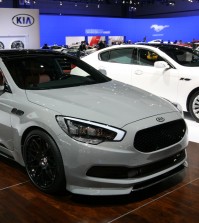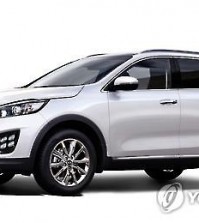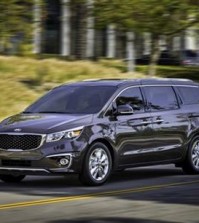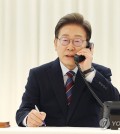- California Assembly OKs highest minimum wage in nation
- S. Korea unveils first graphic cigarette warnings
- US joins with South Korea, Japan in bid to deter North Korea
- LPGA golfer Chun In-gee finally back in action
- S. Korea won’t be top seed in final World Cup qualification round
- US men’s soccer misses 2nd straight Olympics
- US back on track in qualifying with 4-0 win over Guatemala
- High-intensity workout injuries spawn cottage industry
- CDC expands range of Zika mosquitoes into parts of Northeast
- Who knew? ‘The Walking Dead’ is helping families connect
Hyundai Motor, Kia hit hard by unfavorable exchange rate in first half
SEOUL (Yonhap) — South Korea’s two largest carmakers have fallen victim to unfavorable foreign exchange rates that caused an across the board drop in earnings in the first half of 2014 despite better sales from last year, industry data showed Sunday.
Combined global sales of cars by Hyundai Motor Co. and Kia Motors Corp., flagships of Hyundai Motor Group, the world fifth-largest automotive conglomerate, reached 4,042,960 vehicles in the January-June period, up a solid 5.4 percent from 3,836,445 units tallied for the year before.
Despite such sturdy gains in sales buoyed by demand for newly released cars such as the Genesis premium sedan, Sonata midsize family car and to a lesser extent the Carnival minivan, both carmakers reported minus growth in their bottom lines, operating profits and earnings generated by sales.
Hyundai, the country’s No. 1 car company, said its net and operating profits were down 5.1 percent and 5.8 percent, respectively, up until June, while sales were down 0.3 percent to 44.4 trillion won. Its bottom line stood at 4.37 trillion won with operating profit at 4.02 trillion won.
Kia, Hyundai’s smaller corporate cousin, said its net fell 3.3 percent on-year in the first half to 1.9 trillion won, while the critical operating profit numbers nosedived 17.8 percent to 1.5 trillion won. Earnings generated by sales stood at 23.98 trillion won, a decrease of 0.9 percent.
“Concerns about the fallout of the sharp appreciation of the Korean won vis-a-vis the U.S. dollar have become a reality,” said an official at Hyundai Motor.
Local automotive think thanks said for every 10 won the Korean legal tender gains against its U.S. counterpart, Hyundai’s profit will decrease 120 billion won, while losses for Kia are estimated at 80 billion won.
Other watchers said that while the exchange rate hurt Hyundai, it was better off than Kia because of its overseas production plants in China, the United States, the Czech Republic, Turkey, India, Brazil and Russia.
“By making some 64 percent of its cars aboard, the carmaker has been able to limit the fallouts of the strong won to some extent, much better than Kia, which has less overseas factories,” the expert claimed.
For Kia, which only has three plants in China, the United States and Slovakia, conditions are worse. Overseas facilities account for 44 percent of the cars it sells globally.
Another factor that hurt Kia is the weakening of the Russian ruble, triggered by Moscow’s involvement in the unfolding crisis in the Ukraine, which caused the carmaker to lose money when its earnings were converted to the Korean won. The carmaker ranked as the second-largest seller of cars in Russia last month.
Both Hyundai and Kia said they were bracing for tough times ahead because South Korea’s robust trade surplus made it unlikely that exchange rates will become favorable anytime soon.
Both carmakers said they will concentrate on improving quality control, vital for boosting brand equity, and cut costs throughout the production process. In addition, they plan to strengthen marketing efforts at home and abroad so as to win more sales and grab a larger share of the global car market.

















